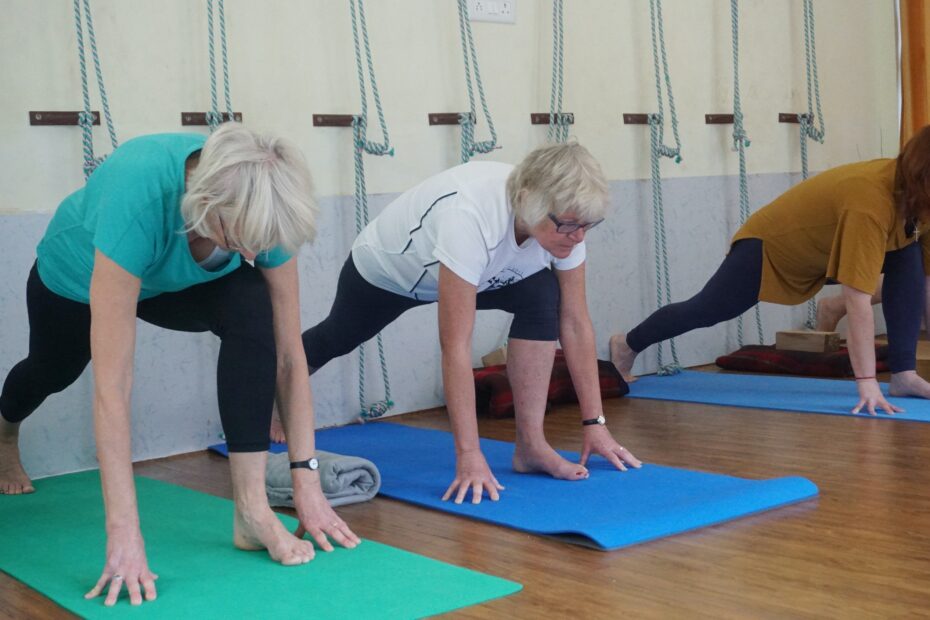Going Green to Remove Dirt and Germs, Natural vs Commercial Cleaning
Mats are either brought to class and placed on shared floors or shared right from the start as people grab a gym or studio mat for each class. Shared mats attract additional germs, fungus, and viruses in addition to the floor that provides another surface of bacteria.
The goal is to have a clean odor-free mat and to prevent fungus growth. The mat’s basic function as a sticky mat must not be compromised in the cleaning process. Sticky mats are a yoga staple allowing one side to remain fixed on the floor and the other side to provide a foundation for intentional movement and nonslipping hands and feet.
Yoga Mat Cleaning Methods
Several methods for ridding the mat of odors and grime exist. Each has some disadvantages that can be worked around. Sprays will disinfect but without wiping after, dirt is not removed.
- Use sprays but consider the timing. Don’t spray a mat in a public place since some may be allergic to the ingredients. Even so called “natural” ingredients in a spray such as lavender or rosemary or witch hazel can permeate the air and irritate the nose, causing coughing or sneezing. They can also irritate the skin itself. Pretreated wipes can leave a residue.
- Always wipe clean after a few moments of use.
- Tossing in the washing machine may allow a particularly absorbent mat to remain heavy and wet for hours or days.
- Hosing the mat down presents some of the same problems with delayed drying.
Commercial or Organic, Green, Natural, Mat Cleaners Ingredients
Cleansers use terms such as “natural,” “organic,” “environmentally friendly,” “green,” and “commercial.” The cleaner solution should contain some form of detergent surfactant and be antiviral, ideally antibacterial and antifungal, but nondestructive to the mat material itself. Most commercial brands contain water, alcohol of some sort, and forms of ammonium chlorite, preservatives, and bleach.
The cost of some store bought “natural or organic” cleaners may be higher than generic commercial brands.
- They may contain coconut derivatives and citrus oils, corn alcohols, jojoba, aloe vera, chamomil, grapefruit oil, tea tree oil, lavender, and, or, witch hazel.
- Clorox has gone green with their Clorox green product. The preservative, Kathon (biodegradable within a month) and the color are the only not-natural ingredients.
- Remember natural is unregulated similar to many supplements being unregulated. Almost anyone can use the word to describe a product. Many ingredients can be derived from nature.
- Rainforests are destroyed when harvesting for all the coconut oil derivative products. Corn alcohol is developed differently from fuel alcohol productions but has a different set of problems associated with its development.
How to Make a Yoga and Pilates Mat Cleaner
While a 10% bleach and water combination is often used to wipe down counters in hospital setting destroying most viruses and bacteria, this isn’t appropriate for skin contact. Make a solution of gentler but effective ingredients to wipe down or to put into a garden spray bottle to spritz either before or after use. Most anti-viral and antibacterial solutions must be in contact with the object for one to two minutes. Spraying and wiping too soon after may effectively wipe off what was meant to be effective.
- Besides cleaning it down with one part diluted dish detergent to six parts warm water after use, try making a combination with one part white vinegar and water. Throw a few sprigs of garden fresh mint into the mix for freshness.
- Distilled, spring, or filtered water can be substituted for tap water.
- Add a few drops of lavender or tea tree oil for a gentle calming scent and mild antibacterial properties.
- A watered down hydrogen peroxide can be used.
- Try one part isopropyl alcohol (which is already composed of alcohol and water) and three part distilled water.
- Witch hazel solution (an astringent) can replace alcohol as a base since it already contains alcohol. Anything with witch hazel is not alcohol free. Add lemon essential oil or avocado oil for scent. Shake well before using.
- A solution of watered baby shampoo, which uses milder detergents and surfactants may be used.
- Stains can be scrubbed with a baking soda paste and toothbrush and then rinsed clean.
- Label the bottle to avoid any confusion and make it fresh as often as possible.
Some will advise cleaning before and after use but if it’s a personal mat usually cleaning after use is enough.
